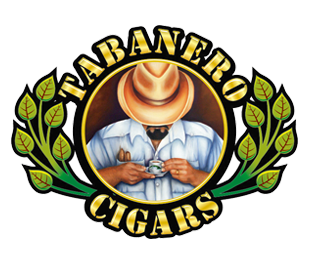Premium Tobacco - Is There A Difference?
When it comes to tobacco, there is usually a well-defined distinction between the Regular Vs. Premium kind.
You will often find 'premium' tobacco products, such as cigars, priced at outrageously high rates. These rates are only attached to products that have the premium label attached to them.
Are you craving a taste for premium tobacco? Tabanero Cigars has got you covered. Their range of premium yet well-priced cigars are sure to satisfy your cravings, as well as your budget.
Today, we will look at a typical example of a premium tobacco product - such as premium cigars - and make a judgment on whether a booming difference in prices is justified. We shall also go over some common types of tobacco and which products are available in the market.

What Makes A Tobacco Cigar Premium?
A premium cigar differs from a non-premium cigar in several ways, including the work, craft, and price. The production of premium cigars is manual. Non-premium cigars, on the other hand, are frequently manufactured by machinery.
Premium cigars use tobacco solely and are harvested, cured, and fermented in the same way as non-premium cigars. Non-premium cigars, in opposition to premium cigars, may be treated chemically.
Non-premium cigar makers can change the color and flavor of their tobacco by treating them with chemicals. The color, aroma, and flavor profile of premium cigars, on the other hand, are all created through the curing and fermenting process.
Each of these cigars is rolled by hand to showcase the workmanship associated with premium cigars. As you may have seen, the price gap between premium and non-premium cigars is large.
Premium cigars are more expensive because of the time and effort required by cigar rollers to hand-roll your cigar.
There is also a distinction in the locations where premium cigars are supplied.
Aside from pricing, the location where you buy the cigar may indicate whether you're obtaining a premium or non-premium cigar.
One of the easiest ways to identify if you're buying a quality cigar is to inquire about its origins and whether it's hand-rolled or machine-rolled.
Furthermore, understanding the roots of how your cigar was rolled can give you a new respect for the effort and dedication that went into making it.
While some quality cigars are more expensive than others, not all premium cigars are.
So, do you think the high price is justified for a premium tobacco product? After going over the above information, it might be so.
What Are The Common Types Of Tobacco And Its Products?
Tobacco can be smoked, chewed, or sniffed. Cigarettes, cigars, bidis, and kreteks are examples of smoked tobacco products. Some individuals also use a pipe or hookah - also known as a water pipe - to smoke loose tobacco. Chewing tobacco, snuff, dip, and snus are all chewed tobacco products. The type of chewing tobacco known as snuff can also be sniffed as opposed to chewing.
Cigarettes, cigars, cigarillos, bidis, chuttas, and kreteks are among the many smoking tobacco products available on the global market. Blended tobaccos are used in cigarettes and cigars, and the type of tobacco used in these products has a significant impact on the physicochemical nature of the smoke produced.
Plant genetics, farming practices, climatic conditions, and curing procedures all influence the chemical composition of tobacco leaves. The leaf tobacco frequently used in cigarettes is classified primarily by curing procedures and tobacco kinds.
There are two or more varieties in each class. Individual flue-cured tobacco types are no longer easily distinguishable, and the type identification usually solely refers to a marketing region. Although different countries use different words for categorization, the underlying premise remains the same.
1 Response
whitemistcafe
Your article superbly highlights the essence of top rate tobacco. It’s no longer simply about a product; it is a cultural experience, an artwork form. The dedication to fine and the craft at the back of it surely units top class tobacco apart. Tabanero’s dedication to offering the great speaks volumes about their passion. It’s a pleasure to research about the heritage and craftsmanship that goes into every cigar. As a cigar enthusiast, this article resonates deeply, and it is a reminder of why top rate tobacco is an irreplaceable phase of the cigar culture.







Yanko Maceda
Author